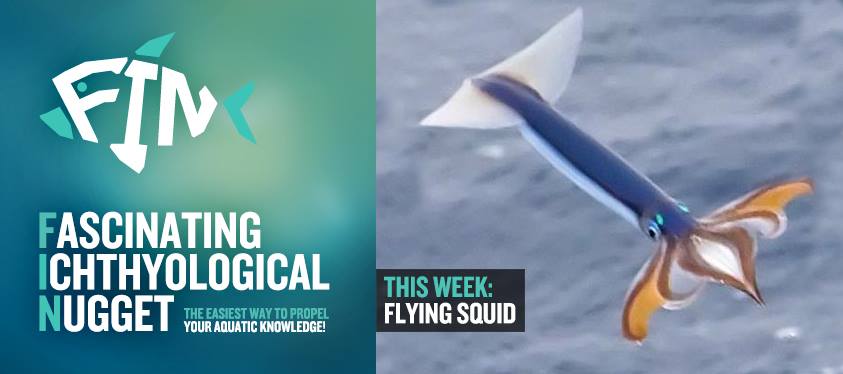Flying Squid
Categories:
FIN

There have long been rumours and anecdotes of airborne cephalopods, but scientists have now been able to document the phenomenon and prove that squid can in fact fly.
In 2012, marine biologists observed and recorded a school of Neon Flying Squid (Todarodes pacificus) in the Northwest Pacific, 370 miles east of Tokyo. As their boat approached, the squid propelled themselves from the water, reaching distances of up to 98 feet and speeds of 37 feet per second. This amazing behaviour seems to be a survival response that occurs when the squid is alarmed or are trying to escape from predators such as Bluefin Tuna, and the squid essentially turn themselves into water-powered rockets, launching fast enough to launch clear of the water and remain airborne for as up to three seconds.
Their flight occurs in four distinct stages. First, the squid opens its mantle - the cloak of soft muscular tissue that surrounds its body - to draw in water, and then contractions shoot out the water in a powerful high-pressure jet, giving it enough thrust to launch. Once airborne, the squid spreads its fins and arranges it tentacles in a particular formation in order to act as “wings”, helping gain as much aerodynamic lift as possible and stabilising it in the air. Finally, just before hitting the water again, it folds its fins and tentacles back into place, turning its elongated body back into a streamlined torpedo, ready for re-entry.
What is even more impressive is the fact that the squid is doing more than just passively gliding – they actively change their posture based on their distance from the water and their phase of flight. Some have even been seen to flap their fins or jet water in mid-air, so because they change their behaviour to prolong their time in the air, Scientists argue that "gliding" is too passive a term to describe what they do and that their abilities qualify as active flight.
This all means that along with penguins and flying fish, various species of squid such as the Arrow Squid (Nototodarus gouldi), Orangeback Squid (Sthenoteuthis pteropus) and Neon Flying Squid (Todarodes pacificus) can now join the ranks of creatures that blur the lines between the aquatic and aeronautic.
Categories
FIN



